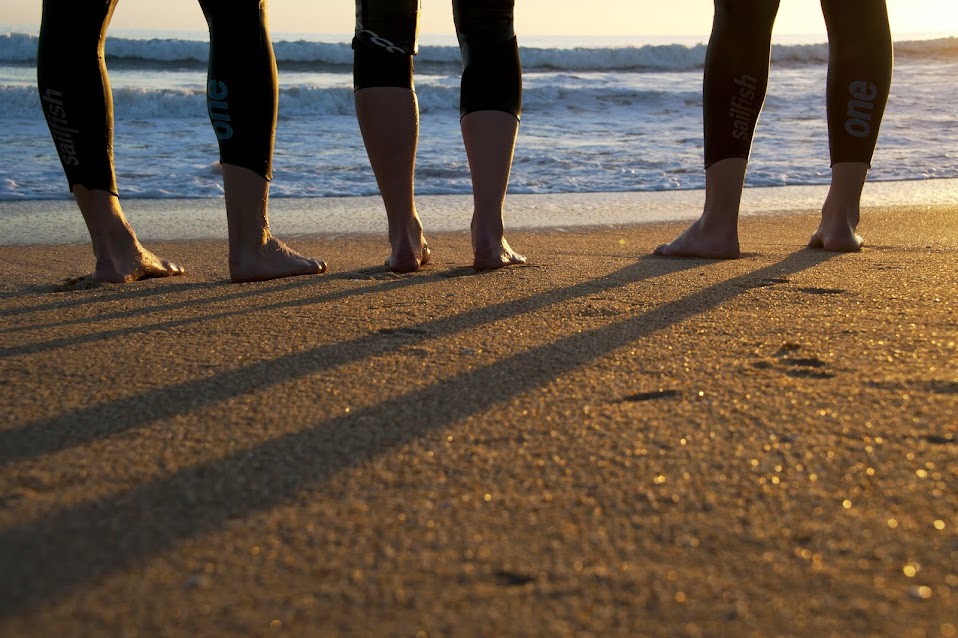Nerves, anxiety, excitement and desperation (for the toilet) are just a few of the emotions people experience before their first open water swim race or triathlon. This article will show you how to have a worry-free swim. It won’t look into the technical side of swimming; rather it will give some practical advice on how to combat negative feelings, how to position yourself and utilise other swimmers to your advantage. Look at the swim itself as an open water adventure…
Regularly athletes become preoccupied about the ‘scariness’ of an open water swim, notably the possibility of being punched, swum over, dragged back or clustered during the event. Generally, this happens because people position themselves badly at the start of the race.
If you are doing your first open water triathlon/ironman, or if swimming is your weakest discipline then the main goal should be completion and therefore your swim time shouldn’t be too important in grand scheme of your race. If this is your situation, let the starting horn go off, and wait for a minute before you start, leaving clear water for you to swim through.
If I don't start at the front won’t I lose out on a fast time?
If the swim has a very big mass start, you may miss a bit of draft if you let everyone else go off first. However, letting the melée unfold in front of you gives you clear water. When practicing swimming in open water, probably your most enjoyable sessions are probably the ones where you were able to enjoy the clear, fresh waters and you were able to feel your stroke connect as you swim. It is unlikely to have been forcing your way through a wall of kicking feet and flaying arms! So why put yourself in that situation? You will swim better and faster by swimming on your own. Critically you won’t be flustered through the swim, you can enjoy it and get onto the bike in a better state of mind meaning you are more likely to ‘nail it!’ when you come to second and third disciplines.
That having been said, for the longer swims (Ironman distance) using the other swimmers to draft off can allow you to save energy and you will swim faster with less effort (either by swimming directly behind them on their feet, or on their hips just to their side). To get better at this, get used to swimming in close contact to other swimmers. This is best done in the pool or in practice open water sessions. You will know the pace you can sustain over longer durations but have you practiced swimming that pace or effort behind someone? Get accustomed to swimming at a faster pace and know the effort you can swim at drafting rather than doing it yourself.
So how do you balance the drafting gains with the clear water benefits?
 |
| Here we can see how the fastest swimmers are creating an arrowhead allowing the slower swimmers to draft on the edge of this arrowhead (Photo courtesy of http://www.cape-hike.co.za/) |
Settle yourself on the edge of the swim pack where you still get the same drafting benefits, just without the risk of being panicky. Think realistically about your swim time and then ‘seed’ yourself accordingly.
Remember that all too often people start off too fast and then fade in the second half of the swim. If you start off at your own pace and aim to be stronger in the second half, you can draft off those people who go too hard and then pick them off towards the end. “Salmon” your way through the field, drafting off one pack and then moving to the next one.
Philip Hatzis
Philip learnt how to swim when he took up triathlon and has managed to make swimming one of his strongest disciplines. He came out the water 10th in Ironman UK and regularly will be in the first or second swim pack in most triathlon events.

